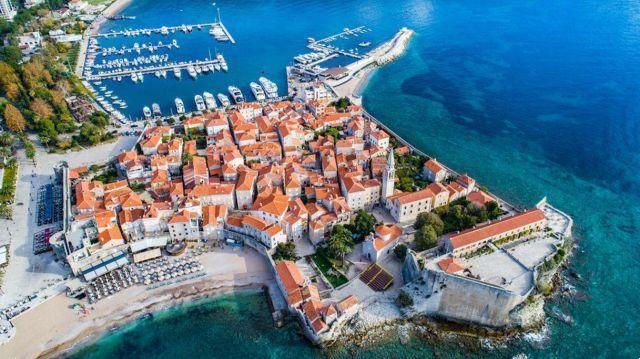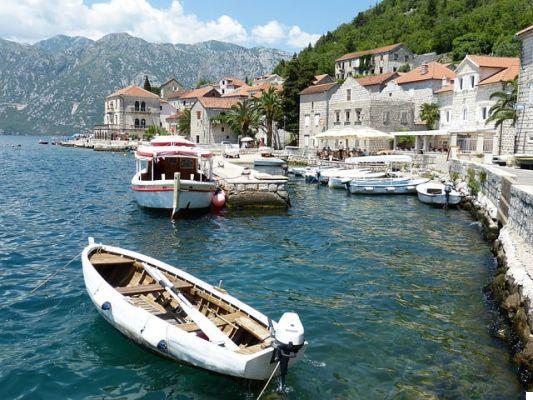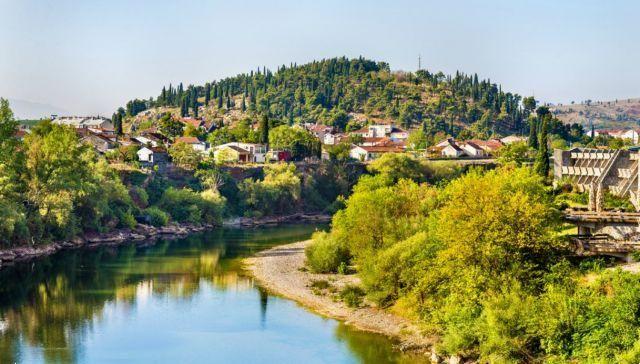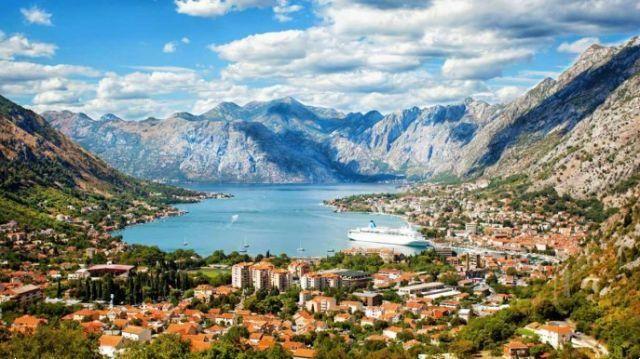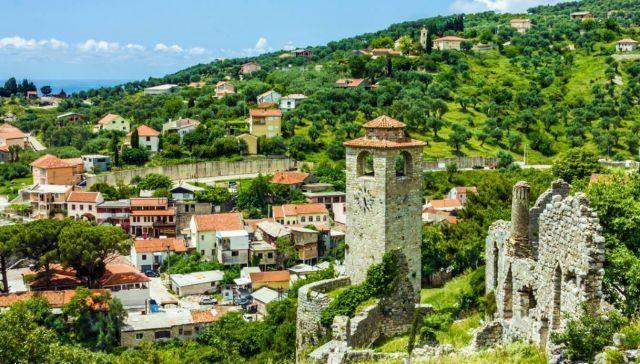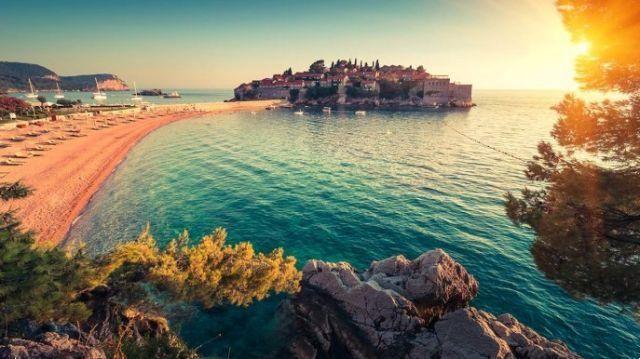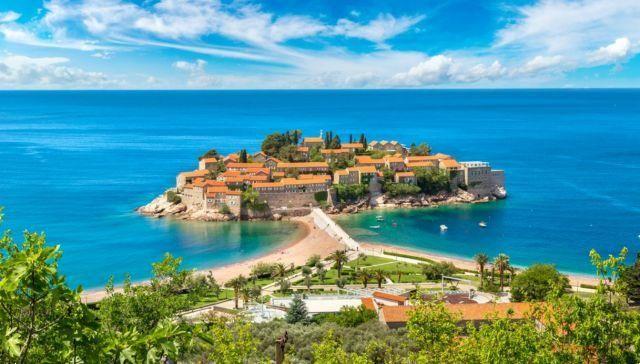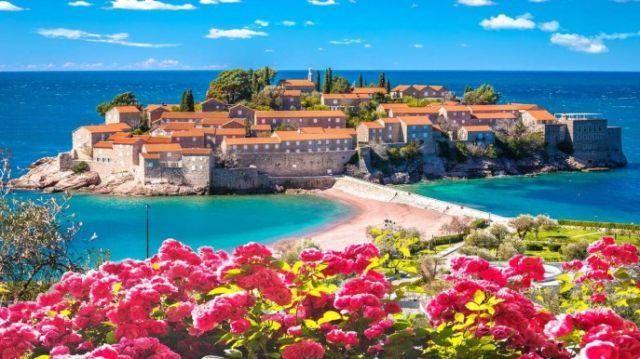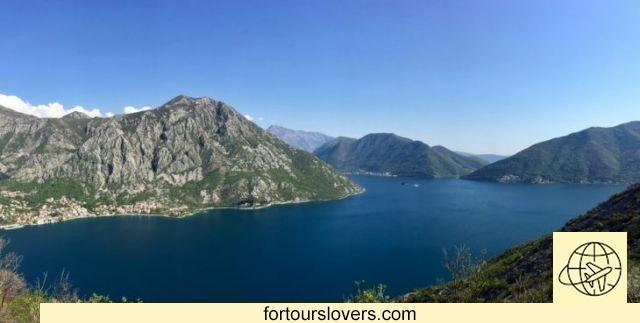
Montenegro
12 things to do and see in Montenegro and 1 not to doDespite being one of the smallest states in Europe, Montenegro boasts countless scenic and environmental beauties. Almost a blunder, considering the reduced territorial extension. Therefore, even if in a couple of weeks, if desired, it is possible to tour the whole country, it is still difficult to see all the major points of interest. The difficulty is also partly logistical: Montenegro, in fact, has aextensive and beautiful coastal area, which is countered, however, by a more inaccessible and equally vast mountainous area. Two different holidays, without prejudice to the possibility of enjoying magnificent excursions starting from the coast. Variety is not just landscaping. Montenegro is a multi-ethnic state, the only one in the former Yugoslavia in which Serbs, Croats, Bosnians, Albanians, Roma, etc. have found a way of peaceful coexistence. Obviously there is no lack of misunderstandings, especially in the religious sphere, even if the elites of the country have been pushing from the beginning (Montenegro has been independent since 2006) for entry into the European Union. Even so, however, the puzzle is not entirely clear. On the one hand, in fact, there is the ambition to enter Europe; on the other hand, the very strong Russian influence with ramifications in many of the country's strategic interests. In short, Montenegro is one beautiful and complex nation. Attributes that we will try to take into account in the description of its main tourist attractions. Happy reading.
1 Herceg Novi
A journey to discover Montenegro can only start from Bay of Kotor (Boka Kotorska), a suggestive network of coves of the southern Adriatic, very similar to the Norwegian fjords to which, not surprisingly, they are often compared. First leg of the journey is Herceg Novi, a town of just over 15000 inhabitants about ten kilometers from Dubrovnik, in Croatia. And in fact, tourists from the Dalmatian city often tend to skip this location which is absolutely worth a visit. There are several things to see: first of all the extensive promenade, the scene of almost all city events. The most important is the "Mimosa Festival" which takes place every year in February and March. Music, parades, food and lots of good wine mark the daily life of residents and tourists (numerous cruise passengers) who visit the city close to the spring season. The historic center is also very beautiful. The squares and cobbled alleys of the old part of the city bear numerous traces of the different dominations that followed over the centuries. To be seen Kanli Kula, the fortress that dominates the upper part of the city e Sahat Kula, the clock tower. Both of these fortifications date back to the Turkish domination while Forte Mare, the bastion at the western end of the defensive walls was built by the Venetians. They also deserve a stop there Orthodox church dedicated to Archangel Michael and Zavicajni Museum. The latter collects many finds from the Greco-Roman age as well as hosting a small section dedicated to partisan warfare as a preamble to the Tito dictatorship. Of course Herceg Novi is also one seaside resort frequented mainly by the political, artistic and intellectual elite of Belgrade (Serbs are the majority of the population).
2 Kotor
After Herceg Novi it is the turn of Kotor, or Cattaro according to the Italian name. In fact, from 1420 to 1797, Kotor was under Venetian rule. The submission to the Serenissima Republic has left many traces in the local architecture, as well as in the dialect which in fact turns out to be a singular mix between Venetian and Slav. Not only that, because it seems that among the Venetians a proverb is still in use which, in remarking the exigency of a request, underlines the huge financial resources at the time destined for the construction of the defensive walls of the Montenegrin city. The adage goes: "You cost me like the walls of Cattaro" and, in fact, as proof of the majesty of this infrastructure, it is enough to consider that even today city walls represent one of the major tourist attractions of the town. Of course there is much more to see: above all churches, more than 30 just inside the historic center. Those of Sant'Anna, San Luca, Santa Maria and San Paolo are worth a visit, without forgetting the Cathedral of San Trifone (city patron). Also worth seeing are the Sea Museum, the Jewish cemetery and the Clock Tower (Sat Kula). Since 1979 the Kotor's historic center is a UNESCO World Heritage Site. The protection came immediately after a violent earthquake and constituted an important stimulus for the diligent reconstruction of the architectural heritage of the city. As for events and social life, Kotor is a very lively city both in winter and in summer. The Feast of the Patron Saint and the Carnival are two very heartfelt events, as well as very heartfelt Night of the Mouths which is celebrated every year on August 19th. To be seen!
3 Mount Lovćen
From deck chairs to the mountains. As mentioned at the beginning, one of the peculiarities of Montenegro, especially the Boka Kotorska region, is the possibility of enjoying beautiful excursions inland starting from the coast. From Kotor the most beautiful trip is undoubtedly the one for Mausoleum dedicated to the Montenegrin prince, poet, bishop and governor Petar II Petrović-Njegoš. The way to the summit of Mount Lovćen is known as Scale of Kotor. The reason is easy to understand: there are 32 hairpin bends to do to get to the top and, as you go up, the panorama opens up more and more, offering wonderful views over the entire stretch of coast. So be careful not to forget your camera! Furthermore, the days when the path was dirt and was the only access to the hinterland are far away. Today the serpentons of the Scala di Cattaro are well asphalted and passable by car. To do!
4 Sanctuary of the Madonna dello Scalpello
An island fruit of a vote. This is enough to explain the charm of“Island-church” of Gosp od Škrpjel opposite the city of Perast (see next point). According to a legend, in 1452 two brothers found an effigy of the Madonna on an outcropping rock. Hence the idea of throwing a number of stones all around the rock to form an artificial island on which to then build a Marian sanctuary. A complex operation, to complete which, from a certain point on, several disused boats were also sunk. Once the island was built, the church was built, even if the one we admire today is very different from the original XNUMXth century building. Not so much, or not only, for the addition of successive architectural elements, as for the fact that the Church of the Madonna dello Scalpello, as indeed the entire region of the Boka Kotorska, was damaged in two cases by violent earthquakes: the first in 1667; the second in 1979. In both cases it was necessary to reconstruct entire parts of the building, taking care, in the second, not to destroy the beautiful wall decorations made by Tripo Kokolja (in Spanish, Tripo Cocoglia) Baroque artist who lived between the 600th and 700th centuries and was very active in and around Dubrovnik. Even today, on July 22, a procession of boats leaves from Perast towards the island of the Madonna. The boats, full of stones, are tied to each other and propelled only by the strength of the oars. Once in the vicinity of the sanctuary, the stones are thrown into the water continuing, in this way, the consolidation of the sacred island. To be seen!
5 Perast
Perast (in Spanish, Perast) is a small town on the border between the gulfs of Risan and Cattaro. A small town that boasts several firsts: it is the oldest inhabited settlement in the region (the first human traces date back to 3500 BC); is the town with the most hours of light, as well one of the most beautiful examples of Baroque architecture in the whole Adriatic. The city, as we still admire it today, was formed between the 4th and 100th centuries. Intense years in which, under the aegis of the Serenissima Republic of Venice, Perast had a respectable navy: XNUMX shipyards and over XNUMX boats ready to battle against the Turks if necessary. It is not over, because, compared to the other places in the Boka Kotorska, Perast boasted a further peculiarity: the absence of a wall, but made up for by a main fortress (Santa Croce) and a defensive system of coastal towers. Again: palaces and churches everywhere. 19 asked in a small space after all. The most beautiful is there St. Nicholas church (Sveti Nikola) famous for its 55-meter bell tower, although the Madonna del Rosario Church is also worth a visit. As for the noble palaces we point out Bujović Palace, seat of the city civic museum (www.muzejperast.me).
6 Budva
After the main towns of the Bay of Kotor it is time to review the Adriatic coast of Montenegro. Long beaches, olive groves, stone houses, tree-lined avenues, ancient villages but also - needless to deny - many hotels and second homes. In fact, since the 60s, the Adriatic coast of Montenegro has experienced a notable tourist development and, as is almost always the case with localities that face sudden economic fortune, attention to the landscape and its peculiarities has not been very high. Fortunately, however, much has remained as it was. The old town of Budva, for example, is a real architectural gem. Observing the buildings and the countless churches (the Church of Sant'Ivano is to be seen), theVenetian imprint. Many things to see also in the immediate vicinity. Two kilometers from Budva is there Becici beach, while about ten kilometers away there is peninsula of Santo Stefano. Becici is a long sandy beach, even named the most beautiful beach in the whole Mediterranean in 1935. Today this is no longer the case: although equipped and on average clean the beach, and especially the coast behind it, have experienced a strong building development that is not always of excellent quality. To the point of class, however, that the peninsula of Santo Stefano is inaccessible to most people. It is a small island of a few hectares which, in the last 30-40 years, has radically changed its skin, transforming itself from a fishing village to widespread luxury resort intended exclusively for an elite clientele. Precisely for this reason, as well as for its very particular location, Sveti Stefan è one of the most photographed places in the Mediterranean (see photo). Finally, to find a place largely spared from building speculation, one must reach Petrovac (Petrovac in Tialian), about fifteen kilometers south of Budva. Beautiful old town and beach, Petrovac is a valid alternative to the summer chaos of Budva.
7 Cetinje
Palaces, churches, museums and monasteries: a Cetinje, the ancient capital of Montenegro, there is a whole world to discover. The city is located within the Lovćen National Park and is easily reachable from Kotor by continuing past the Mausoleum dedicated to Petar II Petrović-Njegoš (see point 3). The panorama, as already mentioned, is wonderful and accompanies the traveler right into this city of about 18.000 inhabitants founded around the middle of the 400th century by Ivan Crnojevic, ruler of the Principality of Zeta. Zeta was an ancient medieval state, roughly coinciding with the borders of Montenegro, which at first opposed the arrival of the Venetians, only to later recognize its sovereignty especially in an anti-Turkish function. And in fact Crnojevic stopped in Cetinje right after a battle against the Ottomans: the city seemed ideal for camping because it was protected by hills all around which made the construction of ramparts and walls unnecessary. The status of capital, however, dates back to 1878, the year of the first independence of Montenegro. At the end of the nineteenth century beautiful buildings were built to house the embassies of the main European nations, as well as the seat of government and the main state offices. And, even today, although no longer the capital, it is this architectural majesty that is the most important visiting card of Cetinje. A real open-air museum, moreover, quite easy to visit, before setting off again for the current capital of Montenegro, Podgorica (see next point).
8 Podgorica
The old road from Cetinje to Podgorica also offers magnificent views. After all, it could not be otherwise considering the location of the Montenegrin capital. Podgorica is located, in fact, in a very fertile plain north of Lake Scutari and is crossed by ben six rivers: four near the city (Zeta, Sitnica, Mareza and Cijevna), and two that instead cross it (Moraca and Ribnica). Just Ribnica represents the border line between the old and the new part of the city. Old part where the Ottoman influence is still evident. Just go to the neighborhood of Stara Varos to have proof: the seventeenth-century clock tower (Sahat Kula, see photo) it is a significant testimony of Turkish cultural ancestry, not to mention the chant of the muezzin which calls the Muslim faithful five times a day in prayer. The new part of the city, on the other hand, increasingly resembles a modern European capital. Parks, gardens and an extensive pedestrian area where there is no shortage of restaurants, clubs and boutiques (to see: Hercegovacka Street). Obviously, being the capital, much of the city center is occupied by the palaces of political and bureaucratic power, without forgetting the museums that tell the ancient and more recent history offormerly Titograd. Yes, because for the uninitiated, from 1946 to 1992 Podgorica changed its name in homage to Marshal Tito, protagonist first of the resistance and then of the Federal Republic of Yugoslavia.
9 Lake of Skadar
Lake Skadar is the definitive seal of the great beauty of Montenegro. It is the largest in the Balkan peninsula with an area ranging from 600 square kilometers in the winter to about 370 square kilometers in the summer. A unique habitat with very rich flora and fauna, ideal for green tourism enthusiasts and birdwatchers (herons, cormorants, pelicans, etc.). Moreover, it is a lake full of fish, so much so that the surrounding villages still draw an important part of their livelihood from fishing for eels, trout, carp, pike, etc. Shkodra, of course, deserves a lot also from a landscape point of view. Along the way (part of the lake is in Albanian territory) you will meet several islets, the most famous of which is undoubtedly Beska. This comma of land houses an ancient monastery which, after centuries of neglect, was once again populated by Orthodox nuns. Not very far from the municipality of Virpazar, famous for its Friday market, e Rijeka Crnojevica where Ivan Crnojevic (hence the name of the locality) took refuge before the final landing in Cetinje (see point 7). In short, nature, history, culture, food and wine (there are beautiful vineyards) and the possibility of numerous outdoor activities (mountain biking on all): Lake Skadar really lacks nothing for an unforgettable outdoor holiday. Without forgetting another decisive aspect: the Adriatic coast, with its long beaches, is about 50 kilometers (from Virpazar to Ulcinj).
10 Ostrog Monastery
Montenegro is a nation rich in spirituality. Especially in the inland countries, life goes much more slowly, favoring meditation and prayer. It is therefore not surprising the large number of monasteries. So many that visiting them all is impossible, at least in one go. There is one, however, whose fame is now global. Let's talk about the Monastery of Saint Basil of Ostrog about 20 kilometers from Niksic, the second largest city in terms of population (approx. 58.000) after the capital Podgorica. The peculiarity of this monastery is that it is entirely carved out of the rock. The structure is divided into an upper and a lower part. The first is also the most fascinating with two underground churches (Church of the Presentation and Church of the Holy Cross) from the beautiful wall decorations. In the lower part, however, there are the Church of the Holy Trinity, built in 1824, and a more recent church, from 2005, dedicated to San Stanko, Montenegrin shepherd killed by the Turks. Despite the centuries-old struggles with the Ottomans, the Ostrog Monastery is also considered a sacred place by Muslims and Catholics. Like the Orthodox, in fact, these confessions also recognize the miraculous virtues of St. Basil, whose anniversary falls on April 29. To be seen!
11 Durmitor National Park
The north of Montenegro preserves unspoiled landscapes. Those of Durmitor National Park they are so spectacular that they deserved it in unsuspecting times UNESCO protection. The city of Žabljak it is the starting point for discovering the park. Several options are available: the most popular are the excursion on the Bobotov Kuk which, with its 2500 meters, represents the highest point of Durmitor, and the rafting on the banks of the Tara (see photo). Especially the latter activity finds more and more success with the public, being the deepest canyon in Europe, as well as the second in the world after the Grand Canyon in Colorado. Not just mountaineering and kayaking. Durmitor National Park allows for an infinity of other outdoor activities: skiing, paragliding, high altitude cycling, safaring, sport fishing, without forgetting the direct observation of the very varied flora and fauna of the region. Apart, in fact, the two rivers of the park, the fish are very rich Mileage e Piva, Durmitor is also home to a beautiful lake: the Crno Jezero (Black Lake) which, frozen in winter, is instead pleasantly suitable for swimming during the summer months. As for the fauna: bears, wolves and eagles populate the more than 300 square kilometers of the park, testifying to how unspoiled the nature of Montenegro still is. Not to be missed!
12 Ulcinj
After the mountain you return to the sea: a Ulcinj, the southernmost of the coastal towns of Montenegro. There are two peculiarities of this locality: the first is the marked one Albanian influence; the second is that just outside the city is the largest beach in the whole nation. Let's proceed in order. Ulcinj, after the Illyrian, Roman, Byzantine, Serbian, Montenegrin, Venetian dominations, from a certain point onwards (1571) became aTurkish enclave. The fearsome Ottoman pirates established here one of their most important bases for raids in the Mediterranean. Only in 1878, after three centuries of undisputed Ottoman rule, did this city return under the principality of Montenegro. Inevitably, however, the Turkish influence has left many traces both from an architectural and cultural point of view. L'oriental style it is particularly evident in the old part of Ulcinj: a fortress, defensive walls, narrow alleys and mosques draw an exotic landscape, decidedly different from other coastal towns in Montenegro. The second relevant aspect, we said, is Velika Plaza, the "Big Beach" extending for 13 kilometers up to the border with Albania. A very long coastline that has experienced an important tourist development for sportsmen (the area is particularly suitable for divers and surfers) and families with children. The relatively shallow waters make the beach suitable for children who can become familiar with the sea with greater tranquility. To see in the surroundings Ada Bojana, the island in the delta of the river of the same name that marks the border between Montenegro and Albania.
1 Don't come for a week
If you intend to travel around Montenegro without fossilizing yourself in one of its seaside resorts, well then it is preferable to plan a trip of at least ten days. Two weeks is even better if, in addition to the sea, you want to visit the mountainous hinterland. As for the currency, there is no change to make. Although it does not belong to the European Union, Montenegro has unilaterally adopted the euro with undoubted advantages for the tourist economy. Clearly, staying on the coast is on average more expensive than inland, even if this does not affect the possibility of finding convenient solutions near the sea.




